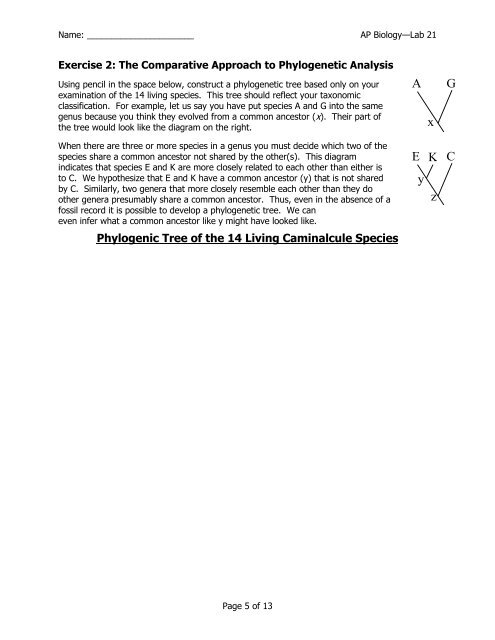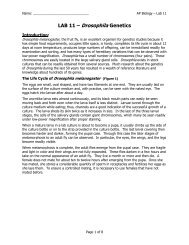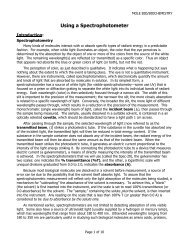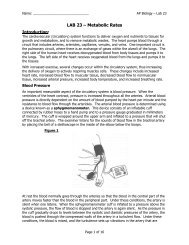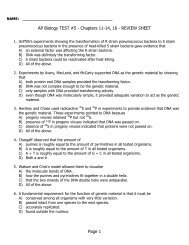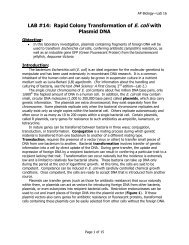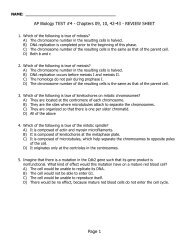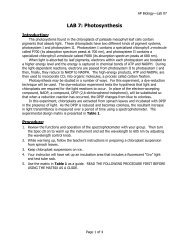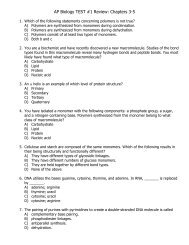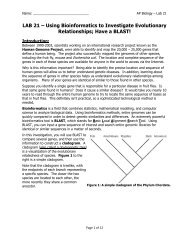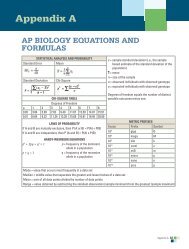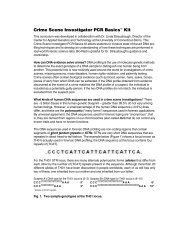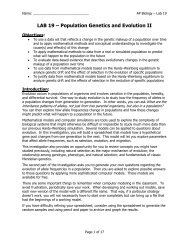LAB 21: Evolution and Classification
LAB 21: Evolution and Classification
LAB 21: Evolution and Classification
Create successful ePaper yourself
Turn your PDF publications into a flip-book with our unique Google optimized e-Paper software.
Name: ______________________ AP Biology—Lab <strong>21</strong>Exercise 2: The Comparative Approach to Phylogenetic AnalysisUsing pencil in the space below, construct a phylogenetic tree based only on yourexamination of the 14 living species. This tree should reflect your taxonomicclassification. For example, let us say you have put species A <strong>and</strong> G into the samegenus because you think they evolved from a common ancestor (x). Their part ofthe tree would look like the diagram on the right.AxGWhen there are three or more species in a genus you must decide which two of thespecies share a common ancestor not shared by the other(s). This diagramindicates that species E <strong>and</strong> K are more closely related to each other than either isto C. We hypothesize that E <strong>and</strong> K have a common ancestor (y) that is not sharedby C. Similarly, two genera that more closely resemble each other than they doother genera presumably share a common ancestor. Thus, even in the absence of afossil record it is possible to develop a phylogenetic tree. We caneven infer what a common ancestor like y might have looked like.EyKzCPhylogenic Tree of the 14 Living Caminalcule SpeciesPage 5 of 13


